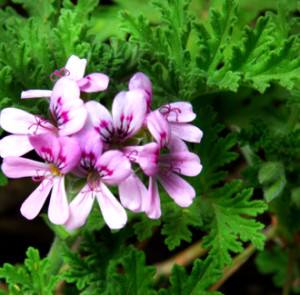 As we quickly approach mosquito season Chelsea from Dallas asks what she can do to prevent these pests. Luckily there are several varieties of plants that can be purchased and placed in containers so that you and your guests can enjoy your patio and home without being covered in OFF!
As we quickly approach mosquito season Chelsea from Dallas asks what she can do to prevent these pests. Luckily there are several varieties of plants that can be purchased and placed in containers so that you and your guests can enjoy your patio and home without being covered in OFF!
Pelargonium citrosum
Pelargonium citrosum is a zone 9b-11 tender perennial or annual in colder climates like Dallas and is often referred to as the Mosquito Plant, Citronella Geranium, or Citronella plant. These can grow up to 2’-3’ in height, will tolerate full sun to part shade, and is especially drought tolerant (although I would recommend watering it regularly if possible). Although most people are more interested in its repelling properties, Pelargonium citrosum will bloom repeatedly with lavender flowers, is a great container plant, and can grow from cuttings. You can set several of these plants out on your patio to deter mosquito pests, but the best method used to avoid them is to rub a couple of these leaves on your exposed skin to release the natural oils found in the plant. The parts of this plant should not be ingested as it can be poisonous.
Nepeta cataria
Nepeta cataria is a zone 3 to 7 perennial and is often known as Catnip. These can grow up to 2’-3’ in height, will tolerate full sun to part shade, and tolerates drought and pollution as well as rocky soils. My recommendation is to contain this plant as it will seed itself throughout your garden and could become invasive. The parts of this plant have been used for teas (has a slight minty flavor), repelling insects, and for cats. Apply the leaves of the plant directly to the skin or infuse the dried and crushed plant into an oil such as olive oil for application.
Many other plants have been said to repel mosquitos, and research has shown that mosquitos are more likely to be attracted to those with a diet of processed or sugary foods as opposed to a more natural diet. Consider eating more garlic and onion during mosquito season.
The following list very well may repel mosquitos. For any plant recommended I would apply the leaves of the plant to the skin, and re-apply every 1-2 hours as it wears off. Keep in mind that some of the smells may be very nice while others are quite offensive.
– Mentha piperita
– Tagetes spp.
– Allium sativum
– Lavandula angustifolia
– Eucalyptus spp.
-Melissa officinalis